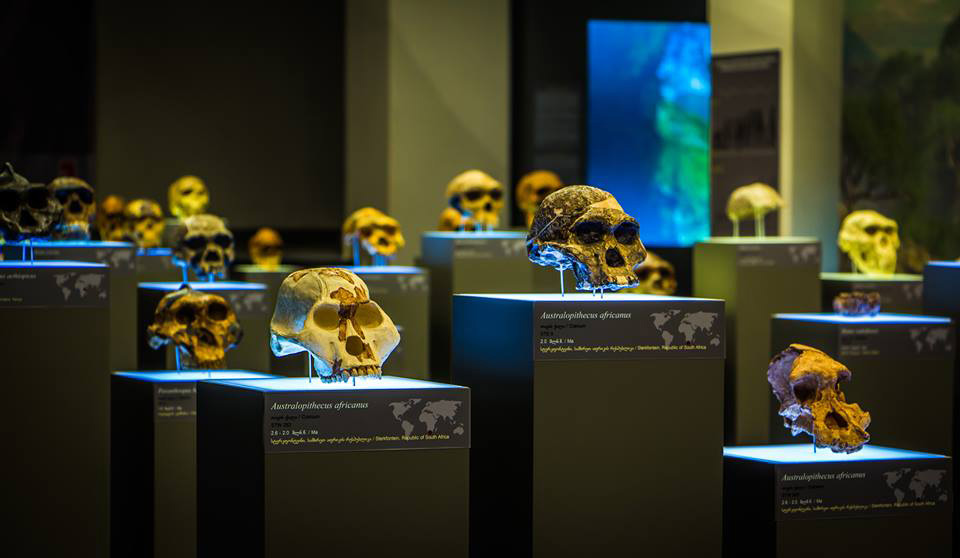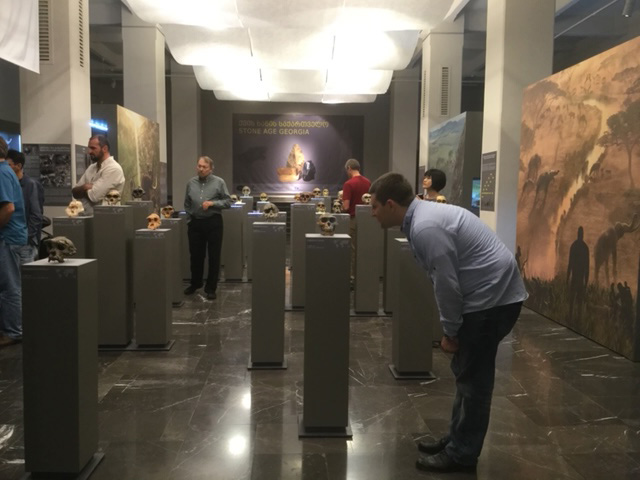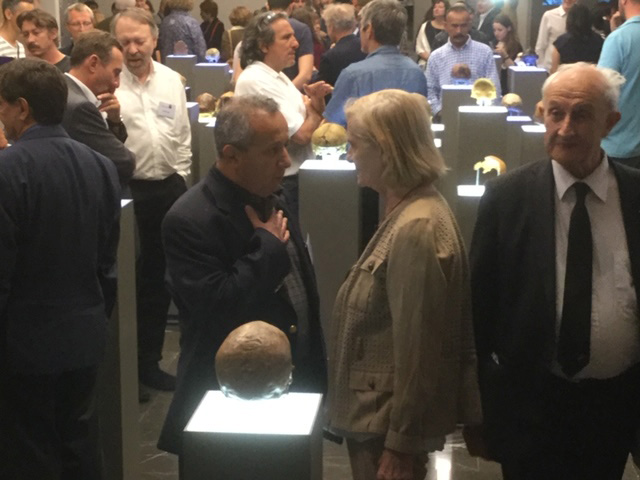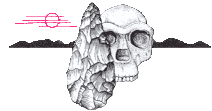2016 International Senckenberg Conference
On Homo erectus Evolution and Behavior

A new museum exhibit unveiled during the conference was
made possible in part by funding from the Stone Age Institute
and the John Templeton Foundation.
The 2016 Senckenberg Conference was held at the Georgian National Museum in Tbilisi September 20th-24th.
2016 marked 125 years of Homo erectus research. It was in 1891 that the first Pithecanthropus erectus was discovered in Java. One hundred years later, in 1991, at the International Senckenberg Conference in Frankfurt, the first Dmanisi hominin discovery was introduced. Since then, five hominin skulls have emerged, furthering our knowledge of human evolution.
In commemoration of a century and a quarter of research, the 2016 Senckenberg Conference focused on early evolutionary stages of the genus Homo and aspects of Homo erectus evolution and behavior in a broad perspective, bringing together Homo erectus specialists from across the globe.
Stone Age Institute researchers Nicholas Toth and Kathy Schick presented a paper titled “Early Homo, the Paleolithic Record, and Cognitive Complexity” and researcher Jackson Njau presented a paper titled “Hominins at Olduvai Gorge, Tanzania and their Paleoenvironmental Context.”
During the conference, the Georgian National Museum unveiled a new museum exhibit made possible in part by funding from the Stone Age Institute and the John Templeton Foundation. The exhibit displays casts of fossil skulls of species important to understanding human evolution.

Researchers visit the new exhibit on Stone Age Georgia
in the Georgian National Museum. The exhibit was funded
in part by the Stone Age Institute and the John Templeton
Foundation.

Researchers visit the new exhibit on Stone Age Georgia
in the Georgian National Museum. The exhibit was funded
in part by the Stone Age Institute and the John Templeton
Foundation.

